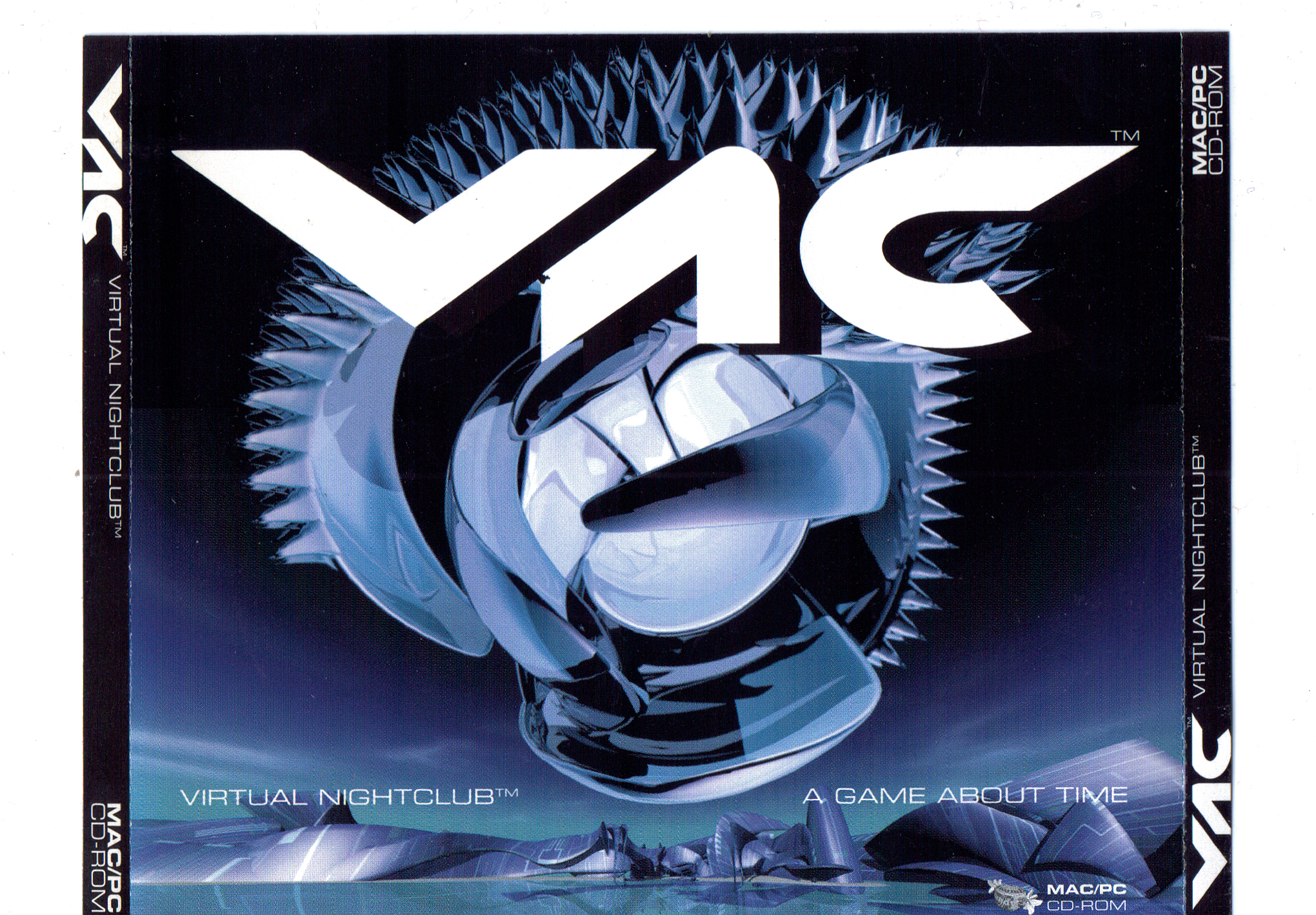The Virtual Nightclub (found PC/Mac adventure game; 1997)
Cover art for the obscure 1997 video game "The Virtual Nightclub"
Status: Found
Date found: 09 June 2016
Found by: Gamecare (Mark D.)
The Virtual Nightclub is an obscure point-and-click PC/Mac video game from 1997. It was originally developed by Prospect Project and published by Philips Interactive Media and Thumb Candy. The game features a concept on a virtual reality nightclub, which was revolutionary for its time. The game is almost similar to Burn:Cycle, except it, relies on a modern and futuristic nightclub and the main plot of this game is that you have to collect 16 S-warps (time warps in the beta version) in order to escape by playing mini-games, plus you only have 6 hours to complete the game. This game is well known to promote British youth culture.
The game was lost until it got resurfaced in 2013 (beta version) and in 2016 (retail version), respectively.
Development
Development of the game began in 1993 when developers James Plummer and David Mingay have ideas on a virtual nightclub, which is based on alternative youth culture in the 90s. In 1994, a prototype of The Virtual Nightclub was created, and it was shown at the Ministry of Sound and the Love Bytes Festival. The Virtual Nightclub prototype was also demonstrated across Europe to Ars Futura, St Petersburg, ISEA, and Madrid.
On February 1995, the Virtual Nightclub name has been registered as a trademark. In May 1995, James negotiated a £1 million plus publishing deal with Michael Kushner VP of Philips Interactive Media in New York (fresh from Woodstock) to develop and distribute the title on MAC and PC formats and feature artists from the many labels that were now under Philip's control via their investment in Polygram, while Titus was the securing sponsorship deals with Levis, Dr. Martens, Stella Artois and Lynx. He worked directly with the brands and the agency, Bartle Bogle Hegarty, to produce interactive advertising inside the Club.
In July 1995, David Mingay took up the role of Producer of the now final version of the VNC, while Rokeby and Olaf Wendt commenced script writing and a cast of more than 150 characters, dancers, actors and voiceover artists was assembled. Artists who agreed to appear in this game are: Mark Wigan, Terrence Mckenna, Scanner, Matt Black, Eva Pascoe, James Lavelle, Redma and Neal Stephenson among others, as well as record labels involved in the game such as Def Jam, Warp, R&S, Apollo, Sounds of the Underground, Island, Moving Shadow, Ninja Tune, Gee Street and ITP providing artists like Herbie Hancock, Jo Henderson, PM Dawn, Redman, the Stereo MCs, Benny Rait, Cru and Suga.
On August 1995, 75 nightclub characters/dancers were filmed on a blue screen in London, while The British Council presented The Virtual Nightclub in Bueno Aires.
In September 1995, Herbie Hancock was filmed in LA directed by Olaf Wendt playing a surreal piano for a key scene in the story. The navigation technology for this game was lead by Graham Deane. As a director, Olaf Wendt was responsible for the look and feel, creating 3D visuals and leading developments in this area. David Collier focused on the interactivity embedded throughout the 3 disc set and commissioned many grounds breaking interactive toys.
In 1996, a trailer of The Virtual Nightclub that has been released. While the 3D navigation, rendering, programming continued, the Def Jam acts were filmed in New York, while the Stereo MCs were filmed in London. Interactive Designer, Simon Atherley, integrated the game visuals and the interaction with custom created code.
In 1997, the final testing of The Virtual Nightclub was undertaken, and the 3 disc set were submitted to the pressing plant for replication. While the VNC team was wound up and Michael Kushner left Philips for Sony. The same that Philips Interactive Media was closed down, making the rights of the game sent back to Thumb Candy.
Versions
Unresurfaced prototype version
Prior to the beta version, there is an unresurfaced prototype version of the game, which was demonstrated in Ministry of Sound and the Love Bytes Festival, as well as in Europe and in Bueno Aires in 1994 and 1995, respectively. No screenshots nor recordings of this prototype existed/survived.
Beta version
The beta version (build number 1.55 MultiDisk) was released on May 24, 1996, as a 3 CD demo disc. It is identical to the retail release, except it has some slight differences between the beta and the retail versions:
- The packaging is bigger than the retail version.
- The executable icon is very different than the final game, which uses the Macromedia Director's projector icon.
- The Philips Interactive Media logo was shown instead of the Thumb Candy logo, which was removed in the final game.
- The splash screen of the game shows the developer's address and other information, instead of the loading screen.
- The intro doesn't have the credits listed.
- The user interface is more different than the final version.
- Certain items are not present in the beta version.
- The story is identical in the final version, plus it was incomplete.
- Lack of dancing characters in almost every room.
- The beta version is almost unplayable, due to the string errors.
Retail version
The retail version was released in 1997, it features major improvements over the beta version, this includes:
- Addition of opening credits in the intro
- Removal of the Philips Interactive Media logo, replacing it with the Thumb Candy logo.
- Addition of dancing characters on almost every room.
- A new installer (the installer is absent in the beta version).
